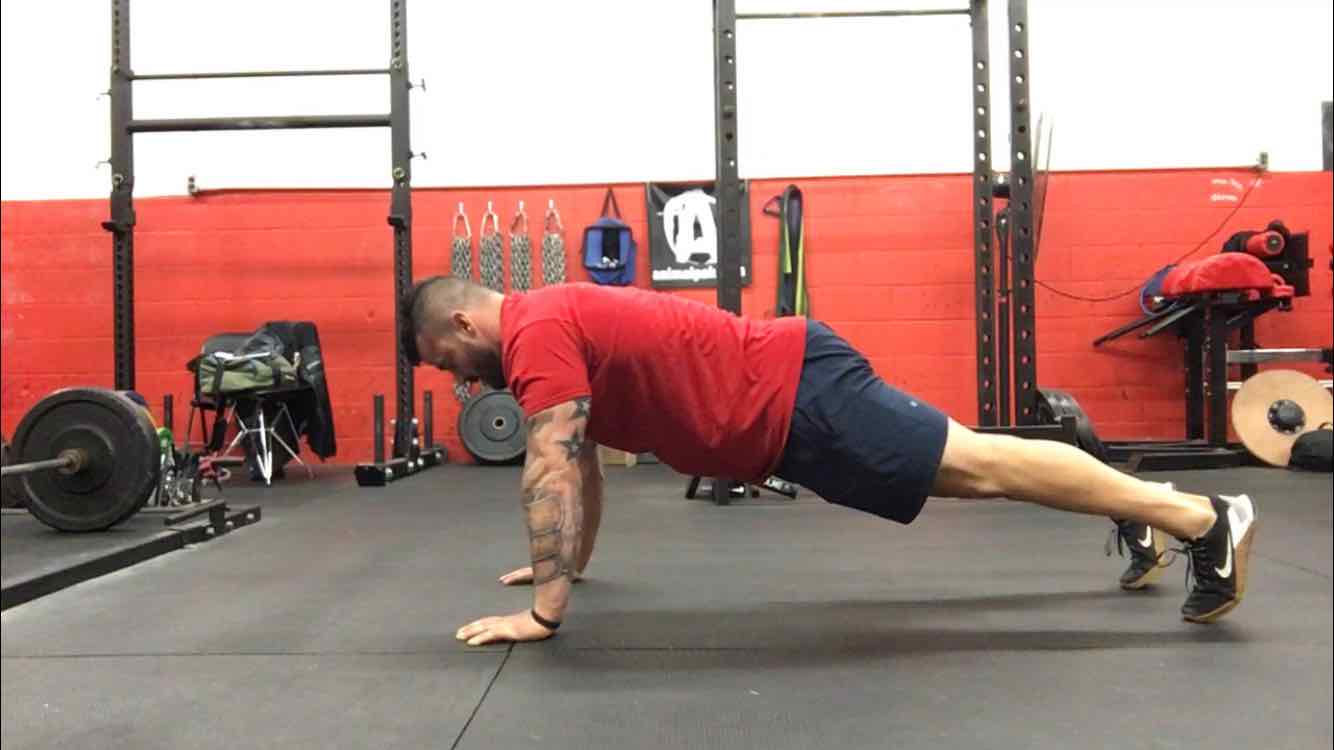
02 Nov Exercise Spotlight – Push-Ups
By Paul Oneid
As powerlifters, we spend a lot of time with our scapula in a fixed position. Whether it be in a lifter’s wedge, pinned to a bench, or racking a back squat, we very seldom perform movements that train a full range of motion (ROM) of the shoulder complex. While perhaps not directly evident, this can have several upstream and downstream repercussions. Without proper scapular ROM or control within the ROM, compensations occur. These typically manifest themselves as biceps tendinopathy, thoracic spine extension, and rotation deficits as well as issues with the pec tendons. As opposed to relying exclusively on bodywork and corrective exercise to keep our shoulder complex healthy, why not prescribe movements that teach scapular control and enable the shoulder complex to go through a larger ROM without being fixed? Enter the push-up.
The beauty of the push-up is that it can be progressed and regressed almost infinitely and it can be used in place of virtually any upper body pressing movement. The key is choosing the right variation for your skill level and your needs. Here are some varieties that you can include in your training to pack on some serious muscle and improve pressing strength, all while helping you keep your shoulders healthy and moving well:
Traditional Push-up
- Easy to perform and can be used in place of any flat pressing movements
Modified Push-up
- Regression from the traditional push-up. Typically used for beginners, or lifters of advanced size.
Feet Elevated Push-up
- Progression from the traditional push-up. Used to increase difficulty. Depending on height, can place additional demand on the delts.
Deficit Push-up
- Progression from traditional push-up. Used to increase ROM and place additional demand on the pecs
DB, or parallet push-ups
- Progression used to target the triceps and place the shoulder in a more stable, neutral-grip position.
Tempo Push-up
- Progression used to increase time under tension and improve proprioceptive awareness.
Band Resisted Push-up
- Progression used to emphasize the triceps and the lockout, as well as end range shoulder flexion and scapular protraction.
Pike Push-Ups
- Progression typically used in place of high incline/ overhead pressing. This variation places a large demand on the delts and upper back, as well as the anterior core musculature.
Handstand Push-Ups
- Progression from the Pike push-ups used in place of the overhead press. Tremendous for upper back involvement and delt development.
Deficit Hand-Stand Push-up
- Progression from the handstand push-up. This is a high demand movement and should only be used by those who are proficient in the handstand push-up and have tremendous core control.
Barbell Push-Ups
- A regression from the modified push-up. Traditionally used for new lifters and those of advanced size.
Slingshot Push-Ups
- Regression used to decrease difficulty of the traditional push-up while increasing demand on the triceps. This can also be used by advanced lifters as a high repetition finisher.
Neuro-Grip Push-Ups
- Progression of instability to enhance scapular control.
Ring Push-Ups
- Further progression of instability to enhance scapular control.
Yoga Push-Ups
- Provides an even larger amount of scapular ROM. Places additional stress on the delts, along with engaging the muscles of the upper back and anterior core.
Basketball/ Med-Ball Push-Ups
- Increases demand of stability in the trunk and places a tremendous demand on the triceps and pecs.
Especially during the off-season, we should be finding ways to challenge ourselves and strengthen ROM’s that may get neglected when training becomes specific to the demands of a powerlifting meet. Swapping out some of your supplemental pressings for push-up variations can go a long way to building not only bulletproof shoulders but strong arms and a stable upper back. Try some of these variations out for yourself, or combine them to alter to difficulty. You won’t be disappointed with the results.
To read more from Paul and to follow his training, check out his Author Page. While you’re on the site, be sure to check out the new releases in the PRS Store and support TEAM PRS.
Paul Oneid
Latest posts by Paul Oneid (see all)
- A Proposition for a Paradigm of Planning Your Personal Periodization - March 4, 2019
- Paul Oneid –> Off-Season | Feet Up Bench PR and Some Squats - March 1, 2019
- Paul Oneid –> Off-Season | A bit of everything - February 21, 2019





Sorry, the comment form is closed at this time.